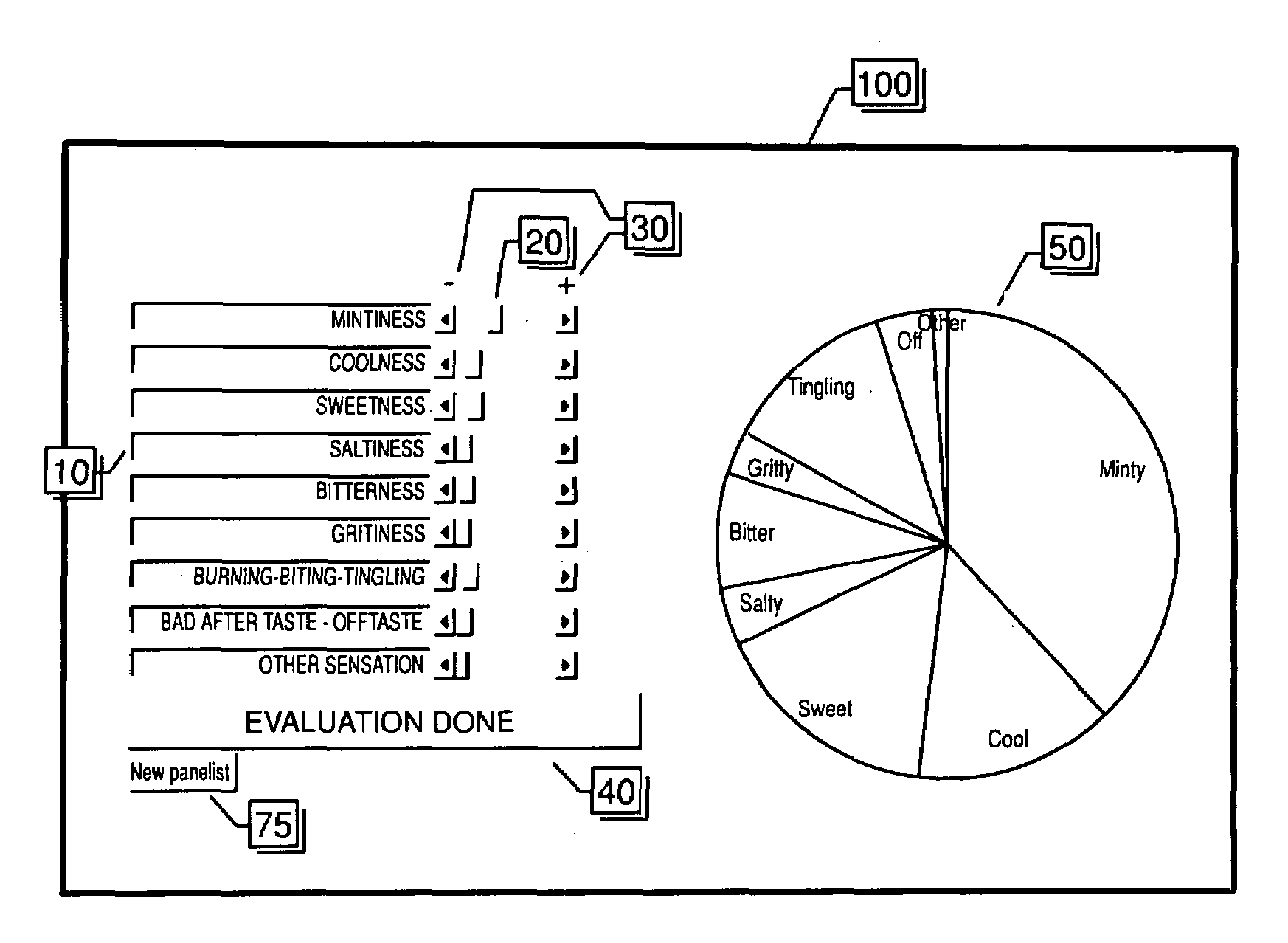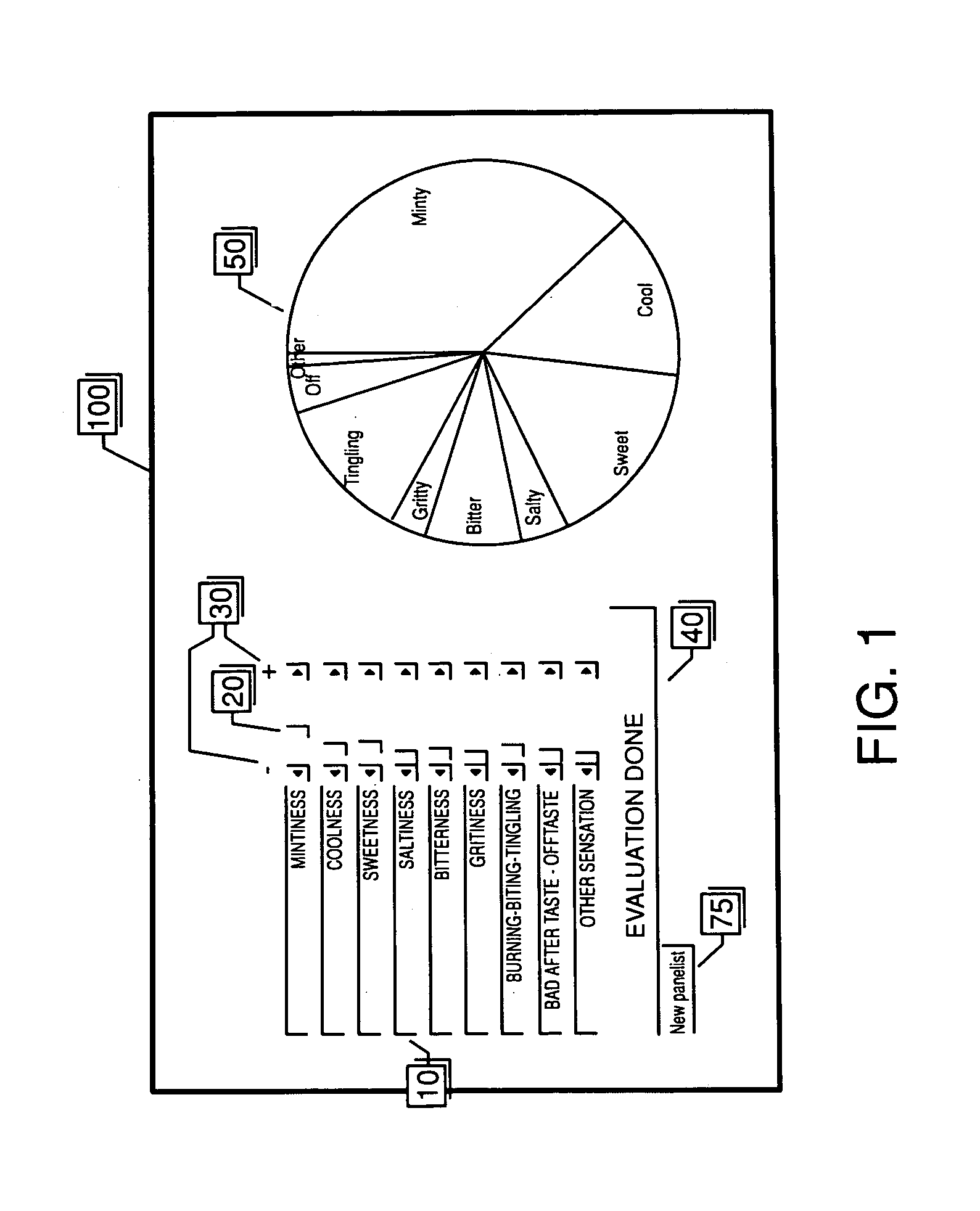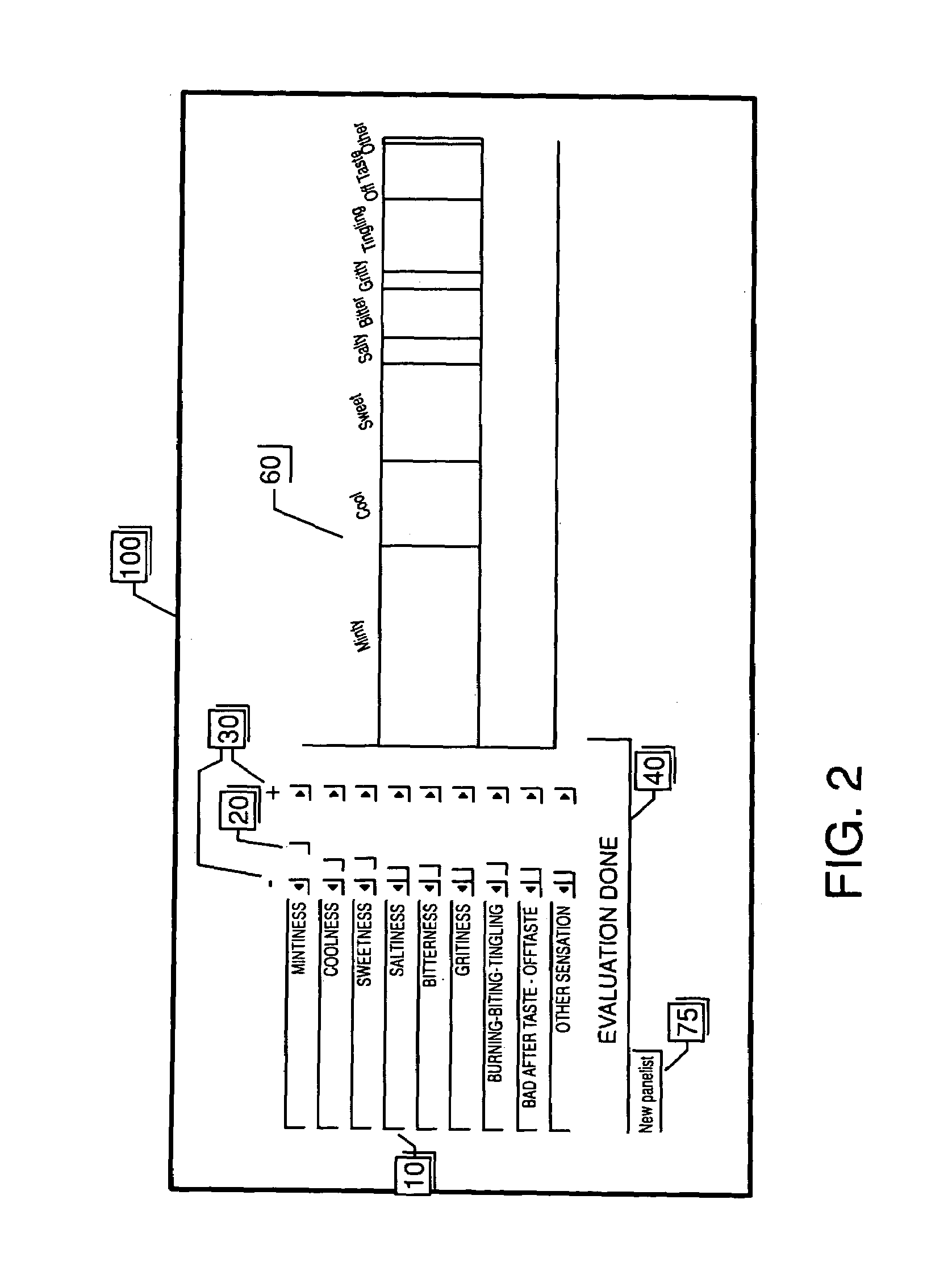Method for the analysis of sensory perception
a technology for sensory perception and analysis, applied in the field of sensory perception analysis, can solve the problems of not being able to accurately calculate the rating, the average consumer may be confused, and the accuracy of the data may be difficult and confusing for the average consumer,
- Summary
- Abstract
- Description
- Claims
- Application Information
AI Technical Summary
Benefits of technology
Problems solved by technology
Method used
Image
Examples
example 1
[0032]Thirty-four women panelists participated in a test to evaluate a commercially marketed toothpaste that contained baking soda and peroxide. The women were classified into 2 groups based on genetic variation of taste phenotype. Eighteen panelists were classified into group 1 (40-±3 years old), and 16 into group 2 (40±4 years old).
[0033]During the test, the panelists brushed their teeth with the product, 15 seconds on one side of the mouth, 15 seconds on the other side. Prior to rinsing the panelists were asked to rate their liking of the product (9 point hedonic scale), its overall intensity (9 point intensity scale) and the relative contribution of 8 attributes to the overall flavor (‘minty’, ‘coolness’, ‘sweetness’, ‘saltiness’, ‘bitterness’, ‘griminess’, ‘burning-biting-tingling’, ‘bad after-taste / off-taste’) using the method described in the above specification. The panelists made the same evaluation just after rinsing (time 0), at 2 minutes, 4 minutes, 8 minutes and 15 minu...
PUM
 Login to View More
Login to View More Abstract
Description
Claims
Application Information
 Login to View More
Login to View More - R&D
- Intellectual Property
- Life Sciences
- Materials
- Tech Scout
- Unparalleled Data Quality
- Higher Quality Content
- 60% Fewer Hallucinations
Browse by: Latest US Patents, China's latest patents, Technical Efficacy Thesaurus, Application Domain, Technology Topic, Popular Technical Reports.
© 2025 PatSnap. All rights reserved.Legal|Privacy policy|Modern Slavery Act Transparency Statement|Sitemap|About US| Contact US: help@patsnap.com



